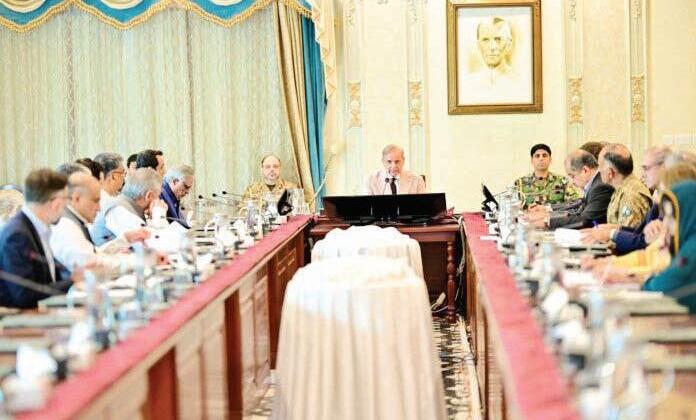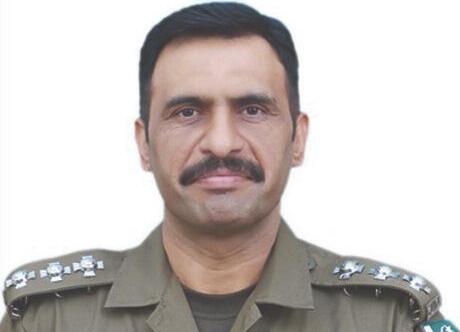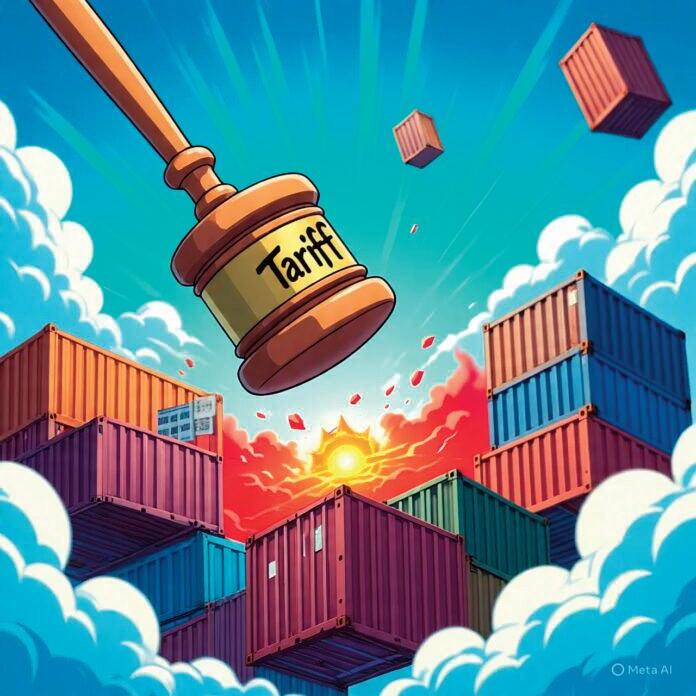g CENTRE STANDS SHOULDER TO SHOULDER WITH CITIZENS OF GB AND AJK IN THIS HOUR OF GRIEF: PM
g EMPHASIZES A COORDINATED AND RAPID RESPONSE TO MINIMIZE FURTHER DAMAGE
g DIRECTS DEPARTMENTS CONCERNED TO RESTORE ROAD NETWORKS AND COMMUNICATION INFRASTRUCTURE TO ENSURE TIMELY AID DELIVERY, MOBILITY
g A COMPREHENSIVE RELIEF PACKAGE WILL BE ANNOUNCED SOON TO SUPPORT RECOVERY AND REHAB: PM
PI M E Minister
Shehbaz Sharif on Friday reaffirmed the federal government’s support to ensure
and recovery in the monsoon-devastated regions of Gilgit-Baltistan (GB) and Azad Jammu and Kashmir (AJK)
The prime minister chaired a highlevel review meeting to assess the human and material losses caused by the ongoing monsoon season particularly in Gilgit-Baltistan and Azad Jammu and Kashmir (AJK)
The session focused on immediate relief efforts, future preparedness, and federal support to the affected regions, a Prime Minister’s Office news release said on Friday In his remarks Prime Minister Shehbaz expressed deep sorrow over the tragic loss of lives and extensive damage inflicted by torrential rains across the country, especially in GB and AJK He reiterated the federal government’s unwavering solidarity with the regional governments and the affected people
The federal government stands shoulder to shoulder with the administrations and citizens of Gilgit-Baltistan and
ordinated and rapid response to minimize further damage and ensure that those affected receive timely assistance and rehabilitation
During the briefing Chairman of the National Disaster Management Authority (NDMA), Lieutenant General Inam Haider Malik, informed the meeting that the monsoon-related disasters have so far resulted in 295 fatalities and over 700 injuries nationwide More than 1 600 homes have been completely destroyed and 376 livestock lost due to the severe weather
Azad Kashmir in this hour of grief, the prime minister stated “I will soon visit GB to express solidarity with the victims and a comprehensive federal relief package will be announced to support recovery and rehabilitation efforts he added The prime minister issued special directives to all federal agencies to collaborate closely with regional authorities to conduct damage assessments and expedite relief measures He stressed the need to prioritize life-saving interventions and safeguard both human lives and property
ISLAMABAD
s ta f f r e p o r t The President of Iran, Dr Masoud Pezeshkian, is set to arrive in Pakistan for a two-day state visit scheduled on Saturday The visit is at the invitation of Prime Minister Shehbaz Sharif marking Dr Pezeshkian s first official visit to Pakistan as President of Iran Accompanying President Pezeshkian will be a high-level delegation, including Iran s Foreign Minister Seyyed Abbas Araghchi, senior ministers, and other high-ranking officials, as
Highlighting the need for better disaster preparedness, the Prime Minister ordered an urgent overhaul of the early warning system run by the Pakistan Meteorological Department to make it more proactive and effective He also directed the departments concerned to restore and repair road networks and communication infrastructure on an emergency basis to ensure timely aid delivery and mobility in affected areas
The Prime Minister emphasized a co-
The NDMA chief also warned of continuing high flood threats in various rivers and streams Minor flooding is expected at Tarbela Chashma Taunsa and Kalabagh while moderate flood levels may occur at Head Marala and Guddu on the Chenab River He cautioned that the monsoon may intensify further towards the end of August
The meeting was attended by AJK Prime Minister Chaudhry Anwar-ul-Haq Gilgit-Baltistan Chief Minister Haji Gulbar Khan Deputy Prime Minister and Foreign Minister Senator Ishaq Dar, Federal Minister for Climate Change Dr Musadik Malik, Federal Information Minister Attaullah Tarar NDMA Chairman Lt Gen Inam Haider Malik and other senior government officials
g ANALYSTS BELIEVE NEW TARIFF EXPECTED TO BOOST PAKISTAN ’S TEXTILE EXPORTS trump tariff slashed to 19% from 29% on pakistani goods af ter trade deal
ISLAMABAD
s ta f f r e p o r t
Pakistan s Foreign Ministry on Friday dismissed India s assertions and claims regarding Operation Mahadev as meaningless, saying the narrative holds no importance in Islamabad’s view During the weekly press briefing, Foreign Office spokesperson Shafqat Ali Khan said that Indian Home Minister Amit Shah s statement was based on lies and fictional storytelling He stressed that Pakistan categorically rejects India s nuclear blackmailing rhetoric and the strategic relevance attached to the so-called Operation Mahadev
Indian Home Minister Shah, earlier this week, claimed before the parliament that Indian security forces recovered Pakistani voter identity cards and locally made chocolates from three men killed in a gun battle in Indian Occupied Jammu and Kashmir (IIOJK) who according to him were involved in the Pahalgam attack
The spokesperson described Indian political leaders remarks in the Lok Sabha concerning Operation Sindoor as baseless and provocative, saying that New Delhi is distorting facts and attempting to justify unprovoked aggression He also condemned the Indian attack carried out on the night of May 6 and 7 without any investigation into the Pahalgam incident
He said the attack resulted in the martyrdom of innocent civilians, and India completely failed to achieve its strategic objectives “Pakistan responded decisively by targeting Indian
s
f
Chief of Army Staff (COAS) Field Marshal Asim Munir on Friday stressed that the enduring partnership between Pakistan and China will continue to play a pivotal role in regional stability according to the military’s media wing COAS Field Marshal Asim Munir made the remarks at the 98th anniversary of the founding of the People s Liberation Army (PLA) of China, commemorated at General Headquarters in Rawalpindi on Friday, according to a press release by the Inter-Services Public Relations (ISPR) The army chief emphasized that their enduring partnership will continue to play a pivotal role in promoting regional stability and safeguarding shared strategic interests, the ISPR statement said China s Ambassador to Pakistan Jiang Zaidong graced the occasion as the chief guest while Defence Attaché Major General
Wang Zhong, Chinese Embassy officials, and senior military officers from the Pakistani tri-services were also present Field Marshal Munir extended a warm welcome to the Chinese guests and congratulated the PLA on its 98th founding anniversary, lauding the army s pivotal role in China s defense, security, and nation-building,” the ISPR said The army chief emphasized that “despite shifting strategic dynamics the friendship between the two nations has remained steadfast and unshakable according to the press release The COAS underscored the strength and strategic significance of Pakistan-China relations, describing the bond between the two nations as unique, time-tested, and exceptionally resilient amid evolving regional and global challenges The Field Marshal highlighted that the Pakistan-China strategic relationship exemplifies mutual
army chief for hosting the event commemorating the PLA s 98th anniversary
He acknowledged the steadfast role of the armed forces in the “fight against terrorism and reaffirmed China’s unwavering support for and commitment to its strategic partnership with Pakistan according to the ISPR The renewed affirmation of
Rs358mn in
Rs1 793bn in 2004-05, Rs1 358bn in 2005-06, Rs1 682bn in 2006-
07 Rs3 134bn in 2007-08 Rs2 382bn in 2008-09 and Rs4 415bn in 2009-10
The pattern continued in subsequent years with Rs2 622bn in 2010-11
Rs1 914bn in 2011-12, Rs8 417bn in 2012-13, Rs7 381bn in 2013-14, Rs3 184bn in 2014-15, Rs6 989bn in 2015-16 Rs32 141bn in 2016-17 and Rs31 018bn in 2017-18
The audit further lists Rs25 934bn in 2018-19 Rs34 099bn in 2019-20 Rs37 065bn in 2020-21, Rs52 438bn in 2021-22, Rs52 595bn in 2022-23, and Rs39 504bn each for 2023-24 and 202425, all of which remain unrecovered according to the report Among the larger discrepancies the report cites Rs7 5bn in 2013-14 and Rs7 52bn in 2015-16 as years with especially high
levels of unaddressed financial issues
Sources within the Auditor General s office observed that despite multiple local government cycles essential oversight mechanisms such as tehsil accounts committees and a fully empowered public accounts committee have not been consistently implemented The 2019 amendment to the local
The sector-wise performance showed the strongest support from Oil & Gas Exploration Companies (+874 48 points), Commercial Banks (+380 51 points) and Oil & Gas Marketing Companies (+257 42 points) On the downside the Technology & Communication sector (-130 74 points) Textile Composite (-80 01 points), and Investment Banks/Securities Companies (-69 74 points) weighed on the index In the broader market the AllShare Index closed at 87 318 23 with a gain of 1 057 27 points or 1 23% Total market volume increased to 609 71 million shares, up from 577 35 million in the previous session, while traded value rose to Rs50 55 billion, showing an increase of Rs14 20 billion There were 352 602 trades reported across 482 companies with 199 companies closing up 245 closing down and 38 remaining unchanged
and
have implemented identical price revisions for specific models
“These practices raise serious con-
cerns of collusive behaviour and a prima facie violation of Section 4 the Commission stated in its press release The CCP emphasized the economic significance of Pakistan’s electric fan industry and warned that any attempts to manipulate prices or undermine fair competition would be dealt with firmly The electric fan industry plays a significant role in the national economy, the Commission noted, reaffirming its mandate under the Competition Act to safeguard market competition, improve economic efficiency and protect consumers from anti-competitive conduct such as price
Trade deal opens new pathways
TH E sentencing of 1108 individuals convicted of arson and rioting by a Faisalabad Anti-terrorist Court adds to the woes of the PTI, for those convicted includes members of both Senate and National Assembly, who will now be disqualified by the Election Commission of Pakistan Not since 9 May 2023 itself did the PTI suffer such a grievous blow for those convicted include those who remained firm since then who refused to hold the customary press conference abjuring the PTI and all its deeds dissociating themselves from the party and retiring from public life all the while raising slogans in favour of the Pakistan Army While earlier the Leader of Opposition in the Punjab Assembly, Ahmad Khan Bhachar was disqualified after conviction, the present batch of convictions will end up depriving the PTI of the Leader of the Opposition in the National Assembly, Gohar Ayub Khan, and in the Senate, Shibli Faraz Other Senators have been disqualified, including Ejaz Chaudhry from Punjab, which means the seat will be flipped, as the PML(N) will win the by-election
What will happen in the National Assembly byelections in Punjab where seats are going to be vacated in Gujranwala Dera Ghazi Khan and Multan districts cannot be predicted as by-elections usually go the way of the ruling party in the province but the convicted MNAs were all sitting on large majorities not to forget that two of them were sitting for multi-generational seats Then there is the PTI’s problem that over two years down the line, the trial of party patron-in-chief Imran Khan for the May 9 events He is already behind bars and disqualified from the Assemblies for corruption cases, but he is seen as the architect of the May 9 events, which included attacks on both military installations and monuments The Faisalabad



IN the dense thickets of global diplomacy where trade wars and strategic alignments increasingly shape bilateral relationships, the recently finalized US-Pakistan trade deal announced on July 31, emerges as more than just a transactional agreement It is a symbol of Pakistan’s economic recalibration and reentry into a competitive global marketplace bolstered by pragmatic diplomacy and visionary reforms While often bracketed by geopolitical noise, this accord has quietly set the stage for what could be a transformative leap for Pakistan’s trade potential, energy autonomy, and technological evolution What makes this deal compelling is not merely the reciprocal reduction of tariffs or the promise of foreign investment Instead it is the calculated convergence of national interests where Pakistan s developmental aspirations and America s shifting economic priorities appear aligned This alignment has manifested in a pact that not only reverses the looming threat of a punitive 29 percent tariff on Pakistani exports which had been present since April but it also establishes pathways for strategic collaboration in energy mining information technology and digital infrastructure Trade figures provide the first concrete layer to this step In 2024, Pakistan exported goods of $5 billion to the US, while imports from the US stood at $2 1 billion yielding a trade surplus of $2
and job creation across domestic supply chains Equally crucial and perhaps more long-term in impact, is the US commitment to assist in the development of Pakistan s oil reserves, estimated at 238 million barrels as of 2024 While previous exploration attempts including a joint venture with Exxon Mobil six years ago
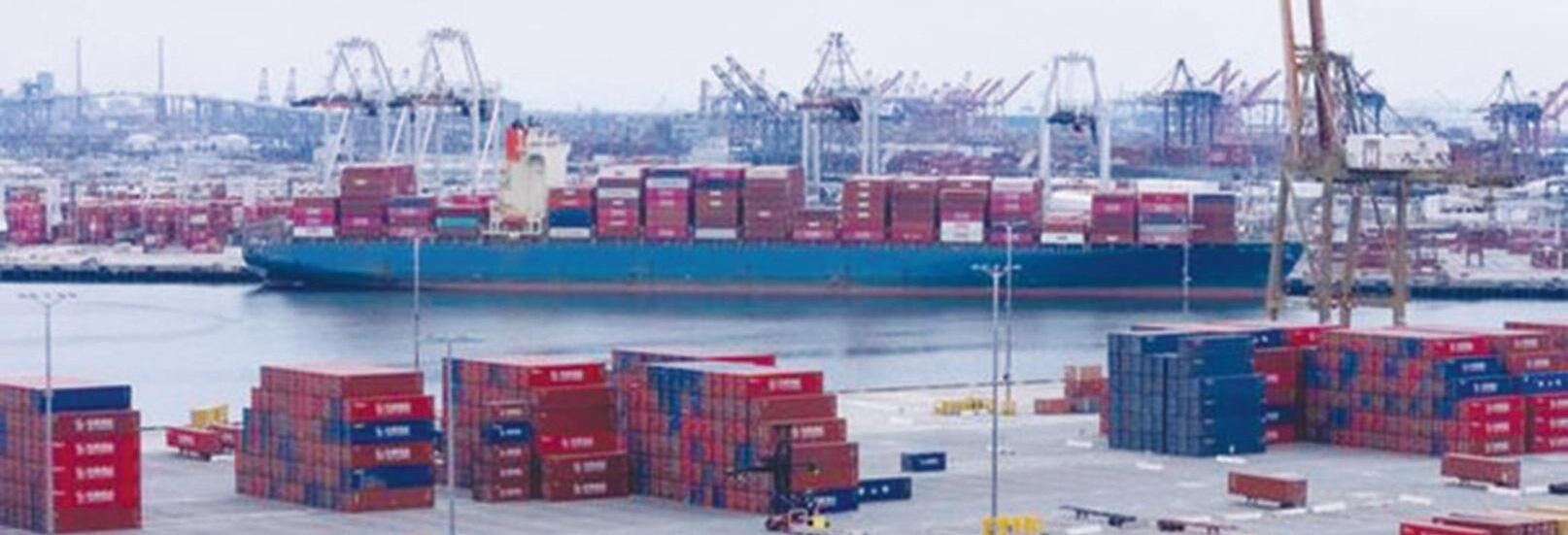



just a sugar crisis It is not merely a fiscal failure It is a wholesale collapse of justice a betrayal of the common citizen whose hard-earned income is mercilessly taxed while billions are siphoned off through fraudulent invoices, fake identities, and sham businesses with impunity It is a nation being bled dry in broad daylight by those who operate not on the fringes of the system but at its very core shielded by loopholes political influence and decades of institutional apathy Pakistan now stands at a historic inflection point The choice is stark and inescapable: either continue to placate the powerful tax evaders and their syndicates emboldening them to erode the nation s fiscal capacity or confront them head-on with every tool of enforcement accountability and justice available This is no time for appeasement Protests staged by those who profit off tax theft masquerading as defenders of small business must not be romanticized They are a smokescreen for a racket that costs this nation more than any external loan subsidy or bailout The salaried class and compliant corporate taxpayers can no longer be the beast of burden propping up a parasitic elite The tax base must be broadened Digital invoicing, FBR reforms, retail documentation, and enforcement crackdowns are not merely administrative decisions they are acts of national survival
for hoarders and tax evaders Protections and incentives for whistleblowers A firewalled FBR free from political manipulation must lead this charge Above all we need political courage an end to the revolving door of office and industry This is not merely about plugging fiscal holes it’s
The bleeding must stop The silence must end And the robbers must be unmasked For Pakistan to rise the tax evasion syndicate must be crushed not placated, not negotiated with, but dismantled with the full might of the law
The hour is late The will of the people is clear And the future of this republic may well depend on whether we choose to act or choose to remain hostage to those who steal trillions and call it business as usual
The writer is a freelance columnist
Rivers of tragedy
abu HurrairaH abbasi
Majid Nabi burfat
urban and tribal areas intensifying radicaliza-
ance are frequently the fundamental causes of the ideological pull of militancy In fact, the origins of contemporary transnational Jihadism can be traced back to the Soviet involvement in Afghanistan in 1979
TE R R O R I S M has cast a long and troubling shadow over Pakistan a menace that began to manifest with macabre intensity in the late 1970s and early 1980s This period was a crucible of cataclysmic events: the SovietAfghan war the Iranian revolution subsequent role of Pakistan in supporting the Afghan Mujahedeen and the emergence of sectarian violence in Pakistan
Following the conclusion of the SovietAfghan war, Pakistan witnessed the influx of large numbers of battle-hardened militants from various parts of the Muslim world The state s failure to effectively disarm and demobilize these combatants led to the proliferation of private militias and increased sectarian violence Over time, these elements entrenched themselves in the national fabric, giving rise to religious extremism and domestic terrorism Nevertheless radicalization has been stoked and violence has been justified by the spread of extreme doctrines frequently via unapproved media and specific schools of thought
Although the state has launched multiple military operations, such as Operation AlMizan (2002-2006), Operation Rah-e-Haq (2007-2009), Operation Sher Dil ( 20082009) Operation Rah-e-Rast (May-July 2009) Operation Rah-e-Nijat (2009) Operation Zarb-e-Azb (2014-2016) Operation Khyber Series (2014-2017) Operation Raddul-Fasaad (2017), Azm-e-Istehkam (2024), ranging from the Swat Valley to the tribal regions of South and North Waziristan, it is increasingly apparent that kinetic action alone is insufficient Tactical victories cannot eliminate terrorism without addressing the ideological foundations and environments that enable radicalisation Moreover, the Ministry of Interior proscribed 82 organizations under section 11-B (1), ATA 1997 in order to exterminate the clout of militant organizations
Evidently socioeconomic hardship political exclusion and a strong sense of griev-
After losing the Vietnam War and being embroiled in the Cold War, the USA strategically mobilized Afghan resistance through Pakistan As a result, the idea of jihad was actively promoted and used as a tool in this endeavor The USA and Saudi Arabia provided the majority of the funding for the training and deployment of thousands of foreign combatants to the Afghan front This contributed to the USSR s exhaustion of determination, but it left a volatile legacy However, the USA abruptly withdrew from the region after the USSR’s exit making minimal investments in disarmament and rehabilitation
Ultimately the abrupt withdrawal of foreign support directly led to a generation of armed, ideologically motivated and battlehardened militant fighters who were suddenly without a battlefield Consequently, many of these individuals swiftly redirected their focus to other pressing Muslim issues around the world including Chechnya Palestine and Kashmir thus internationalizing their struggle It was out of this precarious vacuum that Al-Qaeda tragically emerged
However, it was only in the devastating aftermath of the 9/ 11 attacks that the world was jolted into significant action This horrific event fundamentally shifted the focus toward combating the intellectual underpinnings of terrorism Furthermore an important turning point in Pakistan s internal security was the 2007 Lal Masjid operation
This action was followed by a sharp increase in militant activity
Over 3 000 people died as a result of suicide attacks which increased from 22 in 2006 to 56 in 2007 This led to a surge of retaliatory violence throughout Pakistan destroying both
tion and encouraging the recruitment of militants In response, Pakistan proactively launched comprehensive de-radicalization initiatives specifically designed to rehabilitate captured militants systematically dismantle extremist narratives and proactively promote inclusive counter-ideologies that nurture moderation and tolerance
These programmes aim to undercut the appeal of violent ideologies by creating doubt within extremist ranks, offering rehabilitation pathways and addressing root causes such as poverty unemployment and lack of education The ideological battlefield is as critical as the military one Misinterpretations of religious texts, exploitative narratives, government missteps, drone warfare and social inequalities all contribute to the radicalisation process Countering extremist messaging requires strong theological leadership particularly in societies where the clergy wield influence In Pakistan the fatwa remains a powerful tool, yet it often exists in a grey legal zone A state-supported religious counter-narrative, aligned with constitutional values, is essential to delegitimizing violent ideologies Pakistan situated along a porous and volatile border with Afghanistan faces unique challenges After 9/11 it assumed the role of a frontline state in the US-led Global War on Terror The consequences have been profound According to data from the South Asia Terrorism Portal (SATP), from 2003 to 2023, Pakistan recorded over 25 000 terrorism-related fatalities These include approximately 9 000 security personnel and 16 000 civilians The economic cost has been equally staggering The Ministry of Finance estimates that the cumulative losses, both direct and indirect, exceed $150 billion since 2001 As many as 284 terrorist attacks have been recorded in KP in 2025 with North Waziristan being the pivot point The majority of these losses have been borne by regions such as Khyber Pakhtunkhwa and Balochistan, where insurgency and extremism remain
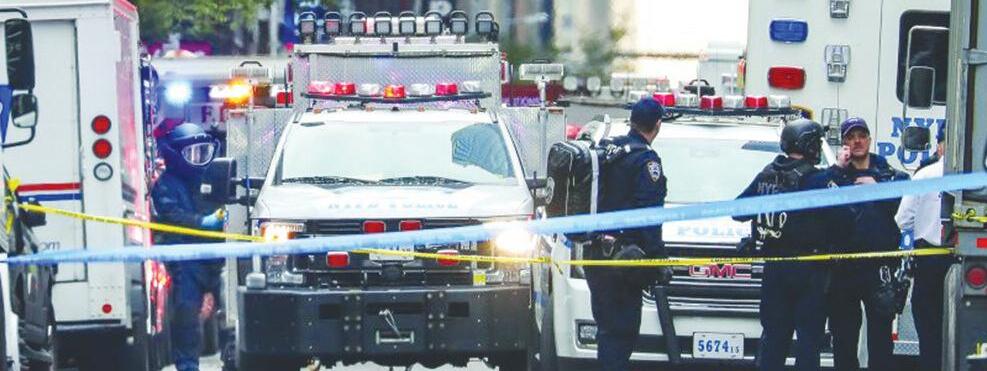
acute However Afghanistan’s continuous unrest and violence especially the Taliban s 2021 comeback have had a direct effect on Pakistan by giving organizations like the TTP a safe haven and a base of operations from which to launch attacks into Pakistan In recent years, the threat has further evolved with a resurgence of ethno-nationalist violence particularly in Balochistan Groups such as the Balochistan Liberation Army (BLA) have intensified their operations, targeting infrastructure, security forces and foreign nationals Analysts increasingly regard the BLA as a significant internal security threat, comparable in impact to religious extremist outfits like the Tehrik-i-Taliban Pakistan (TTP) Hizb-utTahrir (HuT) Islamic State-Khorasan group (IS-K) and Fitna Al Khwaraj (FAK) Separately, urban
e c o u n t e r t e r ro r i s m e f fo r t s . T h e r e fo r e , i t i s e s s e n t i a l t o wo r k o n d i s s e m i n a t
WHAT KIND OF GREAT POWER WILL INDIA BE?


President John F Kennedy and received some support from the U S But then due to a misguided Soviet-inspired domestic energy and economic policy and the British and Americans having high hopes about a strong Pakistan, India drifted towards the Soviet bloc, which was ready to provide diplomatic support during the wars with Pakistan Post-9/11, the U S propped up India as a counterweight to Islamist terrorism from South Asia and increasingly as a hedge against the rise of China All that of course came crashing down with Trump s outbursts It is unlikely that India will ever take the U S seriously about an alignment against China But it is also unlikely that India and China can be natural allies India does play both sides: buying oil from Russia and selling it to Europe aligning with Iran and Israel simultaneously running rampant visa scams and simultaneously being a member of the BRICS the SCO and the QUAD The massively powerful and protectionist Indian agricultural sector and organized labor also have a vise-like grip on Indian policymaking, which is a hindrance to any reform Sooner or later the bill will come due
Another social issue is that Indians from an earlier era who migrated to the west are some of the most assimilated in the world Indian-Americans (and British-Indians) are historically from the upper class, and some of the highest-earning and highesteducated communities abroad, much different from the newer crops of working-class Indians migrating to Canada or New Zealand for example But something has changed in recent years The post-Modi era of migration to the west has seen working class Indians bring their petty grievances and ethnic chauvinism abroad They would rather self-cocoon themselves in their own communities, entrenched in curry and Bollywood, and as Andrew Beck wrote recently erecting garish statues that look more like cultural conquest than immigration with an aim of assimilation Naturally that creates a spiral of animosities and accusations of dual loyalties It becomes difficult to justify pro-India policy to Americans who see their manufacturing jobs moving to India, which, while not a rival similar to China, is also not technically an ally and has no interest in aligning with the U S in the biggest geopolitical questions of the world
The charitable interpretation is that this is all a negotiating tactic and sooner or later there will be a deal; the president will call the prime minister his new best friend Nothing really matters anymore A more reasonable explanation is to use Stacie Goddard s terminology, that this is all about a “great power collusion ” in which the world is inevitably going to be a G2 between the U S and China; the American president is acting unhinged because that is one way to discern who will remain American-aligned and who is just a fair-weather friend trying to hedge The risk, however, is this: No one likes a revolutionary power
ATellis’s recent essay “India’s GreatPower Delusions (July/August 2025) offers a searing critique of the country s strategic posture Tellis argues that India overestimates its influence on the world stage while lacking the economic heft, military capacity, and alliances to back its great-power ambitions He warns that India’s attachment to strategic autonomy and multipolarity risks making the country irrelevant in an era of intensifying bipolarity when the competition between China and the United States will shape geopolitics This thesis is well supported by observable gaps in India s capabilities, but it flattens the rationale behind New Delhi’s foreign policy orientation A more nuanced critique would require understanding India not as a delusional power but as a liminal one a state standing on a geopolitical threshold deliberately navigating ambiguity to preserve flexibility and autonomy in a global order that is not simply cleaving in two but fracturing in more complicated ways India’s foreign policy is best understood through the lens of liminality, the condition of existing between worlds rather than in a fixed role or within a bloc India is not a classic great power but neither is it merely a regional actor It is a titan in chrysalis whose $4 1 trillion economy rapidly expanding defense capacity and influence among many countries of the so-called global South signal not delusion, but a conscious avoidance of rigid alignments Tellis sees India’s pursuit of multipolarity as a strategic liability Instead it is a form of adaptive realism an intentional pivoting strategy necessitated by geography history and structural constraints in the international system
THE LOGIC OF BEING IN BETWEEN: India s geography alone justifies this cautious balancing act Flanked by two nuclear adversaries China to the north and Pakistan to the west India cannot afford to align too closely with the United States without becoming more vulnerable to entanglement in great-power conflicts or retaliation from regional adversaries Its borders are not buffered by oceans, as is the case for the United States; instead, they are live fault lines This reality mandates engagement with rivals, particularly China India’s relationship with China is a watchful one marked by both détente and deterrence a formula that seeks to manage competition without inviting conflict Tellis is correct in observing that India s military capabilities, while expanding, do not yet provide it with an edge in deterring China Nor does India currently project force beyond its near seas What he underestimates, however, is India’s strategy of “distributed leverage”: a mix of defense modernization diversified procurement and regional engagement India is not standing still; it is moving forward not by mirroring great powers but by leveraging minilateralism smaller-scale collaborations between a few countries and issue-based coalitions These include the security partnership known as the Quad, featuring Australia, India, Japan, and the United States; the I2U2
Dr muhammaD rizwaN Bhatti
BEIJING
M i a n a b R a R T h e P e o p l e s L i b e r a t i o n A r m y ( P L A ) c e l e b r a t e d t h e 9 8 t h a nn i v e r s a r y o f i t s f o u n d i n g o n F r id a y, a s o ff i c i a l m e d i a m a d e m u l t i p l e m a j o r r e v e l a t i o n s o f t h e C h i n e s e m i l i t a r y ’s r e c e n t a c h i e v e m e n t s i n e q u i p m e n t d ev e l o p m e n t a n d d e f e n s e o f n at i o n a l s o v e r e i g n t y t e r r i t o r i a l i n t e g r i t y a n d m a r i t i m e r i g h t s , i nc l u d i n g t h e d e b u t o f C h i n a s f o u r t h Ty p e 0 7 5 a m p h i b i o u s a ss a u l t s h i p f o o t a g e o f a P L A h e li c o
the sea, the Type 075 focuses more on landing from the air, thanks to its ability to carry more helicopters
A combination of Type 075 and Type 071 enables the PLA to have stronger joint operations capabilities in amphibious combat operations in locations such as the South China Sea and around the island of Taiwan, Song said Having four Type 075 amphibious assault ships shows
troops are not only receiving
and more advanced weapons and equipment, but have also showed their determination and readiness in defending national sovereignty and security Celebrating the 98th founding anniversary of the PLA on Friday officers and sailors on the Hubei standing on the vessel s large flight deck, sent congratulations to their comradesin-arms China Bugle an official media account of the PLA s news media center reported on Friday The report noted that the Hubei is the PLA Navy’s fourth Type 075 amphibious assault ship and was given the hull number 34 Another report by the military channel of China Central Television (CCTV), showed clips of the Hubei and another Type 075 amphibious ship the Hainan in formation and holding a training exercise in the South China Sea The formation also featured four Type 071 amphibious landing ships and the Hubei held integration training with the Type 726 air cushioned landing craft, the CCTV report shows Often dubbed a helicopter carrier the Type 075 amphibious assault ship has a straight flight deck similar to an aircraft carrier but mainly hosts helicopters in addition to amphibious vehicles and landing craft Song Zhongping a Chinese military affairs expert told the Global Times that the Type 075 amphibious assault ship is a new generation of amphibious landing vessel While the Type 071 amphibious landing ship focuses on landing from
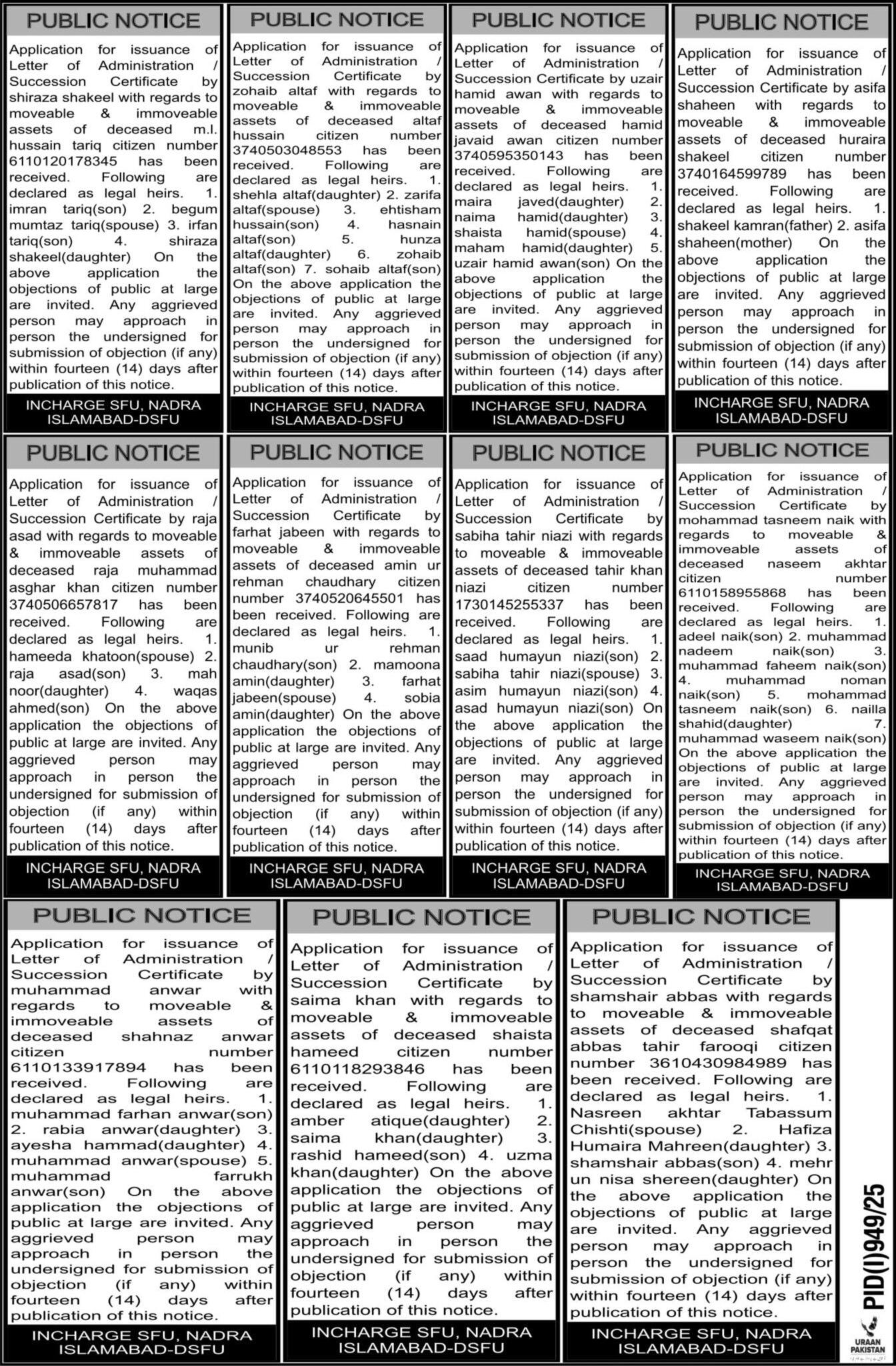


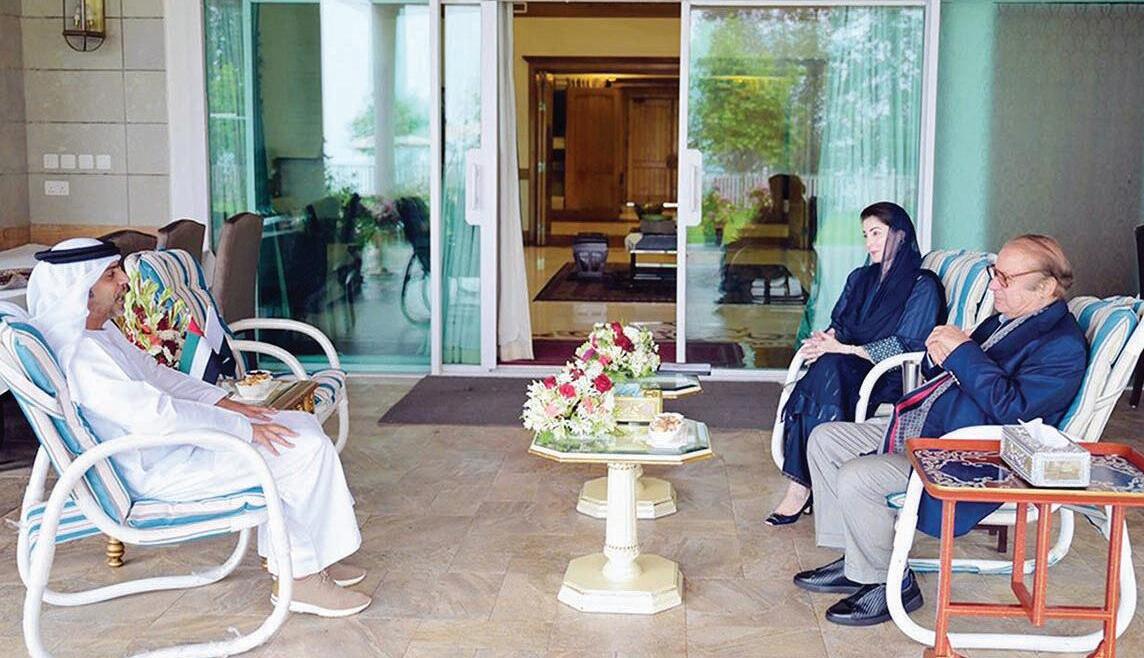
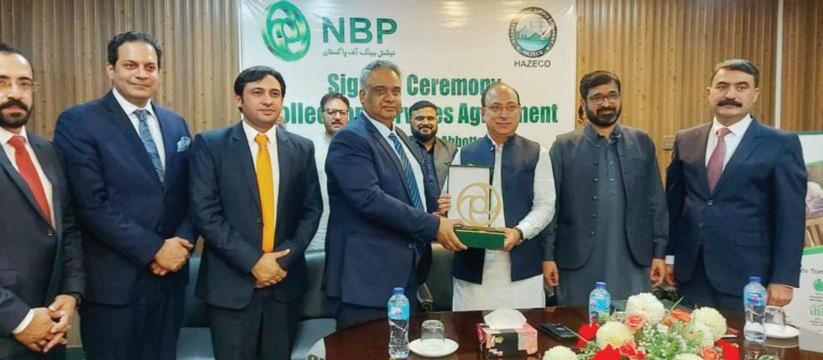
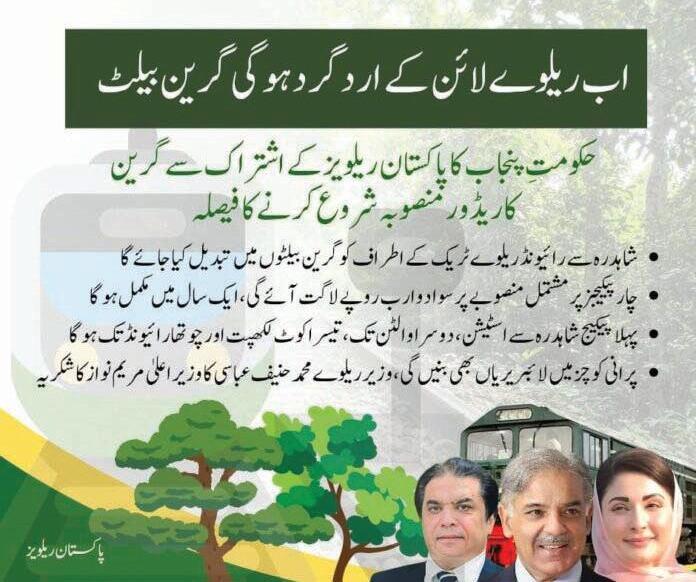



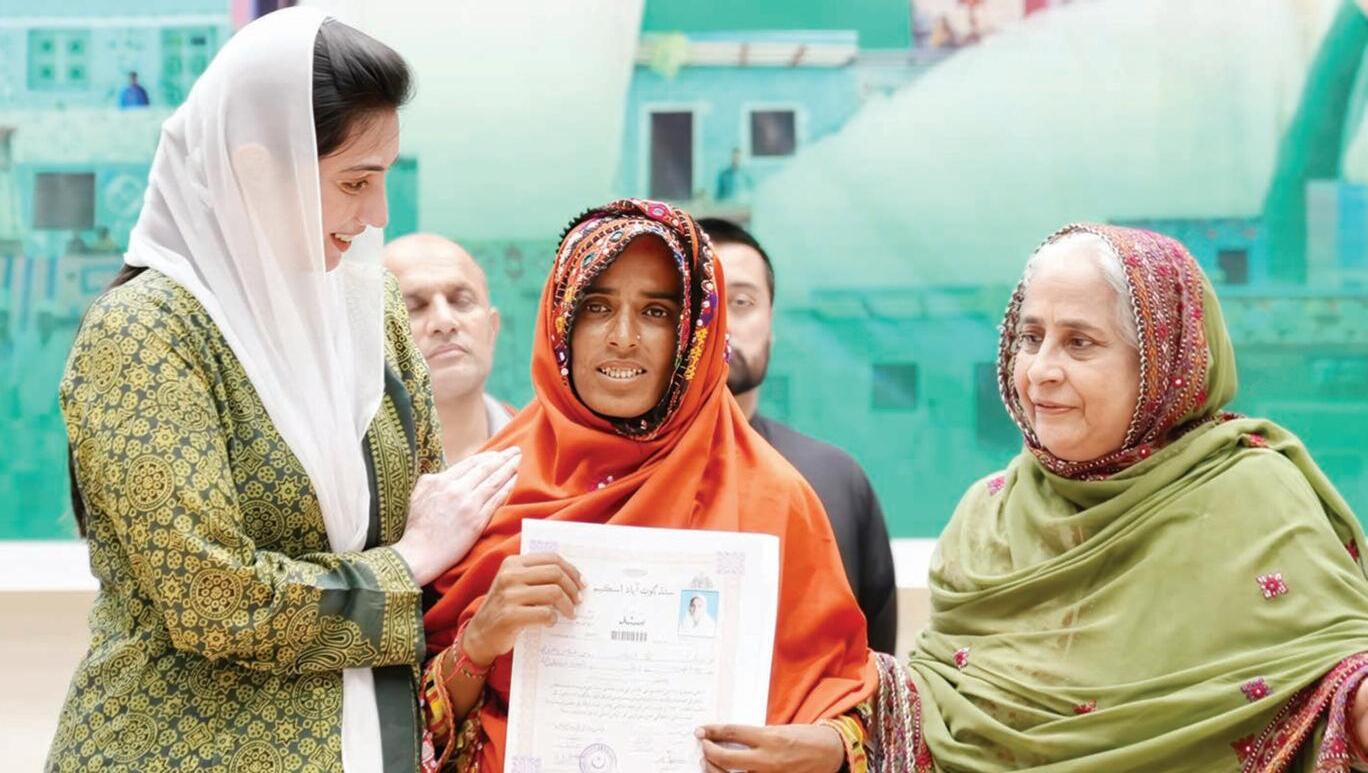
g PUNJAB KEEN TO EXPAND COOPERATION WITH UAE IN DIVERSE SECTORS: CM MARYAM

